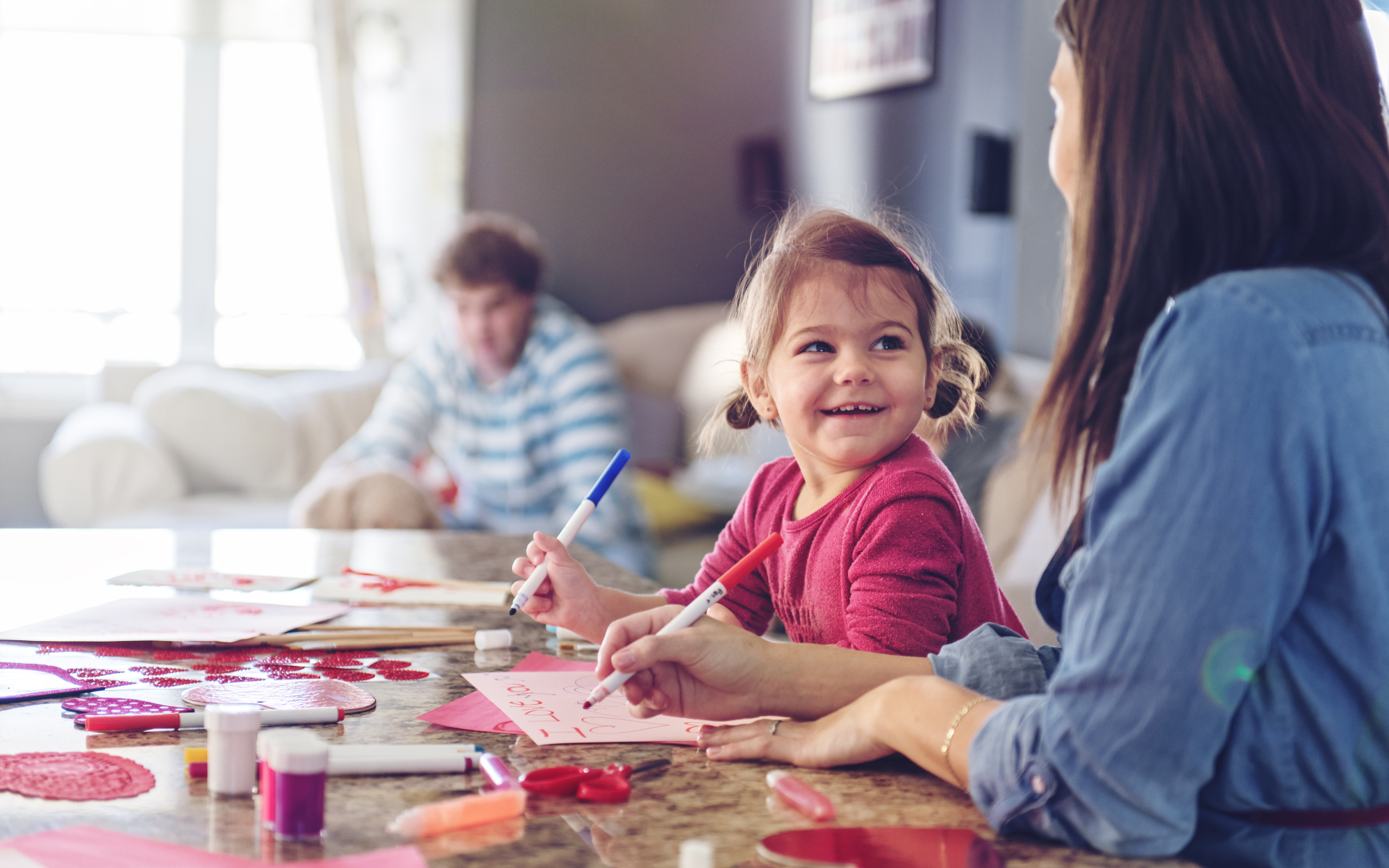Valentine’s Day is the perfect opportunity to share love and appreciation with the special people in our lives, and what better way to do that than by creating personalized DIY Valentine’s Day cards? This craft is not only fun but can also be incredibly beneficial for individuals with autism, especially when combined with sensory activities. Using materials like glitter, markers, stickers, and stamps, these DIY cards offer a fantastic way to engage in creative expression while benefiting from the therapeutic advantages of sensory play.
In this blog post, we’ll explore how making Valentine’s Day cards can be a meaningful and enjoyable sensory craft, especially for individuals receiving autism behavior support through ABA therapy or ABA services.
The Power of Sensory Crafting for Autism
Sensory crafting offers several benefits for individuals with autism, helping to enhance fine motor skills, stimulate cognitive development, and support emotional regulation. By focusing on textures, colors, and patterns, DIY Valentine’s Day cards provide a multisensory experience that is both engaging and calming.
For those involved in ABA therapy, activities like card-making can reinforce learning in a fun and relaxed environment. ABA therapy (Applied Behavior Analysis) techniques often emphasize the importance of hands-on activities, allowing individuals to practice skills such as communication, socialization, and following instructions—skills that can be practiced while crafting personalized cards.
Craft Supplies to Enhance Sensory Exploration
To get started on your DIY Valentine’s Day cards, gather a variety of craft supplies that can stimulate the senses and encourage creativity:
- Glitter: The sparkle of glitter provides both a tactile and visual sensory experience. It’s a wonderful way to encourage fine motor coordination as individuals sprinkle and spread glitter across the cards.
- Markers and Crayons: These tools not only allow for artistic expression but also offer opportunities for practicing hand-eye coordination. The vibrant colors can stimulate visual processing, which is helpful for children who may benefit from visual learning.
- Stickers: Texture-rich stickers provide a tactile experience while allowing individuals to make choices and decisions. This can also help build independent skills, which are reinforced in ABA services, as individuals select stickers that reflect their personality and creativity.
- Stamps and Ink Pads: The use of stamps can be a calming sensory activity, allowing for repetitive motions that build focus and concentration. Stamps also offer a less messy alternative to drawing, providing an opportunity to practice fine motor skills.
Benefits of DIY Valentine’s Day Cards for Autism and ABA Therapy
-
Fine Motor Skill Development:
- Decorating the cards requires precision and focus, which can help individuals improve their fine motor skills. Whether it’s drawing, coloring, or applying stickers, these activities are excellent for hand-eye coordination and control.
-
Emotional Expression:
- Creating cards offers a way for individuals to express feelings and emotions, which can be particularly beneficial for children on the autism spectrum who may struggle with verbal communication. Through visuals like drawings, symbols, and stickers, they can convey messages of love and affection.
-
Socialization and Communication:
- If you’re creating cards with others, this craft can promote social interaction. It can be a shared experience where individuals can express ideas and learn from each other. For children in ABA therapy, the process of sharing materials, complimenting each other’s work, or even delivering the cards can help develop social skills.
-
Sensory Regulation:
- The sensory aspect of this craft—handling different textures, experimenting with colors, and engaging in repetitive motions—can help regulate sensory sensitivities and promote focus. Individuals with autism often benefit from sensory integration activities that help them manage overstimulation or sensory avoidance.
-
Positive Reinforcement:
- As individuals engage in the process of making cards, ABA services can incorporate positive reinforcement. Complimenting their creative efforts or rewarding them for completing a card can motivate them to continue practicing and developing their skills.
-
Creativity and Independence:
- DIY Valentine’s Day cards give individuals the opportunity to make choices about design, colors, and materials. This fosters independence and confidence, key goals often targeted in ABA therapy.
How to Make the Craft Fun for Everyone
To ensure that this craft is enjoyable and beneficial for all participants, consider adapting the activity to suit individual needs and preferences. For children with sensory sensitivities, you may want to simplify the process by using fewer or softer materials. You can also incorporate calm-down breaks if the activity becomes overwhelming, allowing them to return to the craft when they feel ready.
If you’re working with a child in ABA therapy, you can use this craft as an opportunity to reinforce positive behaviors, such as following directions or completing a task independently. For example, you might break the task down into smaller steps—first decorating with stickers, then coloring, and finally assembling the cards. This step-by-step process mimics the structure often used in ABA therapy to promote successful task completion.
Making DIY Valentine’s Day cards is a fantastic sensory craft that can offer numerous benefits for individuals with autism. From enhancing fine motor skills to fostering creativity, this activity supports the goals of ABA therapy while providing an enjoyable way to celebrate love and connection. Whether you’re crafting on your own or with others, the sensory experience of decorating a personalized card is both therapeutic and meaningful.
As you gather your materials—glitter, markers, stickers, and stamps—remember that the most important part of the craft is the opportunity for self-expression and connection. So, grab your supplies and get ready to make some beautiful, heartfelt Valentine’s Day cards that will leave a lasting impression!
Interested in more Valentine’s Day themed activities? Checkout our Blog page for more fun ideas like making Candy Heart Sensory Paintings!


